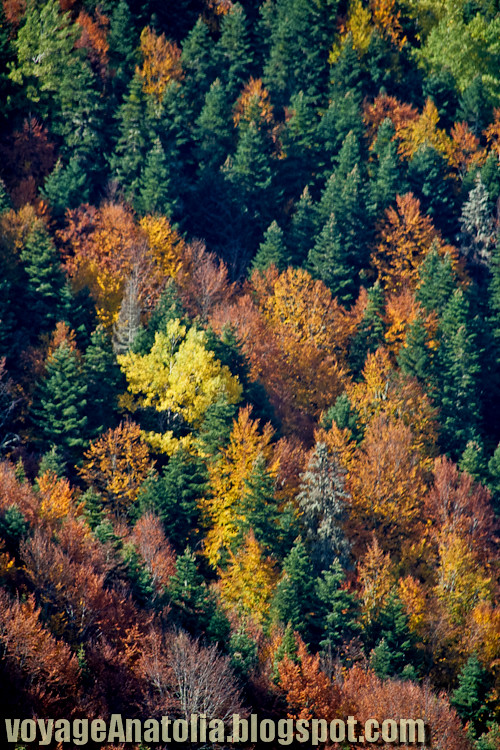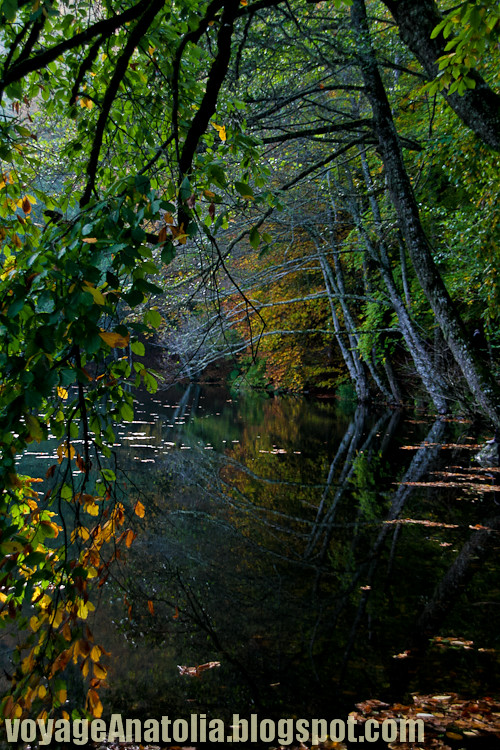
The nature begins to change in Autumn, always in perfection. While quietly preparing to winter, the chirping of the spring, merry laughter of the birds, and sounds of streams full of enthusiasm are reduced gradually; leaving the place to the sound of the wind and rain, again. Green trees take on different colors according to their types in every fall. Each color has a thousand and one tones and shades. Millions of trees are preparing for winter in Seven Lakes region, in another poetry, in another autumn.

The green pine trees, located between the yellow, brown, red, orange trees as though someone spilled paint from the Heavens. Which painter, can paint the nature in that wonderful colors, or even transfer that wonderful landscape on canvas! My feelings are mixed in confusion: admiration, joy, surprise, happiness! ...
Lost among millions of trees and leaves in this perfection.
The time is hiding somewhere.
Your search in vain.
For a while,
You will not find the time ...
Everything lives in its own time,
A crackling, the sound of a bird, a whisper of wind, falling leaves,
and the voice of your own pace.
Just made, and lost in their own time ...
A l'Anatolie Journey - Route des Sept Lacs - Nurperi Ünsal

The Yedigöller National Park (Seven Lakes) is located in the north of the Bolu Province, Turkey, in a quite hilly region of the Western Black Sea Region. The park is best known for the lakes formed by landslides and the rich plant life. There are oaks, black pines, Scots pines, hornbeams, alders, firs, elms, tilias, taxus and beech trees in the area. Some of the lakes are linked to each other with leaks from the bottom .
Deer, roe deer, bear, wild pig, wolves, foxes and squirrels are the types increasing in numbers, with effective protection in the park and the surrounding area. Bolu-Seven Lakes route is covered by snow in winter, access is only through Yeniçağa-Mengen-Yazıcık route.
Photography: voyageAnatolia.blogspot.com

